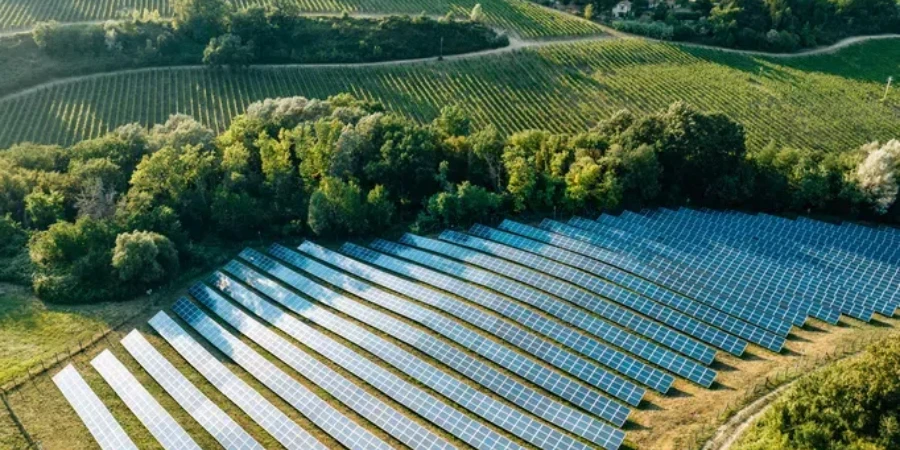HELAPCO Anticipates Record 2024 For Market; Calls For A Relook To Revised Energy Plan
Key Takeaways
- Greek solar PV association pegs the country’s new installations in H1 2024 at over 920 MW
- Large-scale solar systems led the deployments, followed by commercial and residential solar
- The association believes Greece’s revised NECP does not factor in the progress its PV market has made so far
- It recommends the government to control the over-licensing situation to contain solar power generation curtailment in the future
The Greek solar PV market grew by 920.5 MW new capacity addition during H1 2024, which expanded its cumulative installed capacity to 8.024 GW at the end of June 2024, The Greek Association of Photovoltaic Companies (HELAPCO) believes this indicates another record year of installation for the country’s solar PV market.
New capacity installed during the reporting period increased by 43.7% year-on-year (YoY), almost 10 times that of wind which grew by 97 MW. The growth was majorly led by large-scale systems of more than 1 MW capacity with 580.06 MW.
Commercial systems within the 10.8 kW to 1 MW capacity range contributed another 281.93 MW.
Residential installations of 58.55 MW, with capacity ranging up to 10.8 kW, improved 4 times YoY thanks to the success of the Photovoltaics on the Roof program, according to HELAPCO (see Greece’s Solar & Storage Funding Scheme).
The Greek solar PV market grew to 7.1 GW PV in 2023 to which H1 2023 contributed 489 MW, according to details shared by the country’s Renewable Energy Sources Operator and Guarantees of Origin (DAPEEP) in August 2023 (see Greek Renewables Capacity Grows To Over 11 GW).
While HELAPCO sees strong installation activity during the remainder of the year, it believes the country’s updated goal of 13.5 GW cumulative PV capacity for 2030 under its revised National Energy and Climate Plan (NECP) or ESEK is ‘unrealistic.’
In the medium term, Greece targets 8.5 GW PV capacity by 2025, which the association expects to be achieved in autumn 2024. Projects that have already secured grid connection conditions add up to an estimated PV capacity of around 20 GW by 2030. Relevant companies have already placed equipment orders for mature projects. This shows that the 2030 target may well be achieved by 2026.
“In addition, photovoltaics mature faster in terms of licensing than other RES and can be built in a short period of time, providing further guarantees for the timely achievement of national targets. They are also by far the most democratic power generation technology, enabling hundreds of thousands of citizens to actively participate in the green energy transition,” stated HELAPCO.
HELAPCO points out that the revised NECP does not factor in the ongoing technological progress of solar PV technology, which when accompanied by storage systems can bring down generation costs.
Another point that the association highlights is that while the NECP refers to the importance of self-consumption, it does not specify any quantitative target or roadmap for this segment.
According to the association, even under conservative estimates, Greece can install 11.5 GW solar PV capacity by 2025, and 19 GW by 2030. It can even achieve 21.2 GW capacity by 2030. Hence in a letter to the government, as reported by various local media outlets, the association demands that it stop accepting license applications for new projects lest it lead to curtailment.
The letter reads, “…the new ESEK attempts to beautify a frantic situation of monolithic overdevelopment of the installed capacity of the sector, as a result of over-licensing policies implemented from 2020 onwards…”, and suggests, “…stopping excessive investment interest in photovoltaics and in general RES, including self-production programs, which is the only way to contain the emerging technical imbalances.”
For batteries, Greece targets to achieve 4.325 GW capacity by 2030, against 3.1 GW in the previous plan, which the association believes will likely fall short of the actual need. This target should be increased to between 7.5 GW and 8.0 GW by 2030.
Source from Taiyang News
Disclaimer: The information set forth above is provided by Taiyang News independently of Chovm.com. Chovm.com makes no representation and warranties as to the quality and reliability of the seller and products. Chovm.com expressly disclaims any liability for breaches pertaining to the copyright of content.




